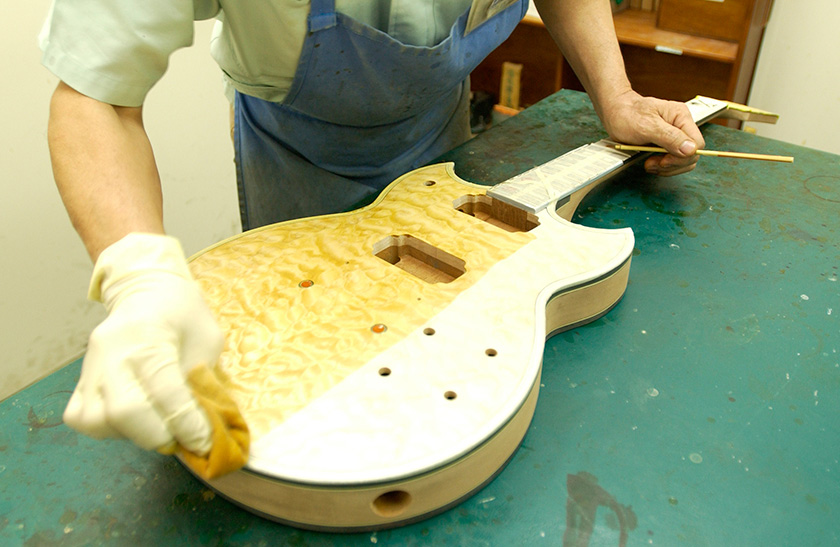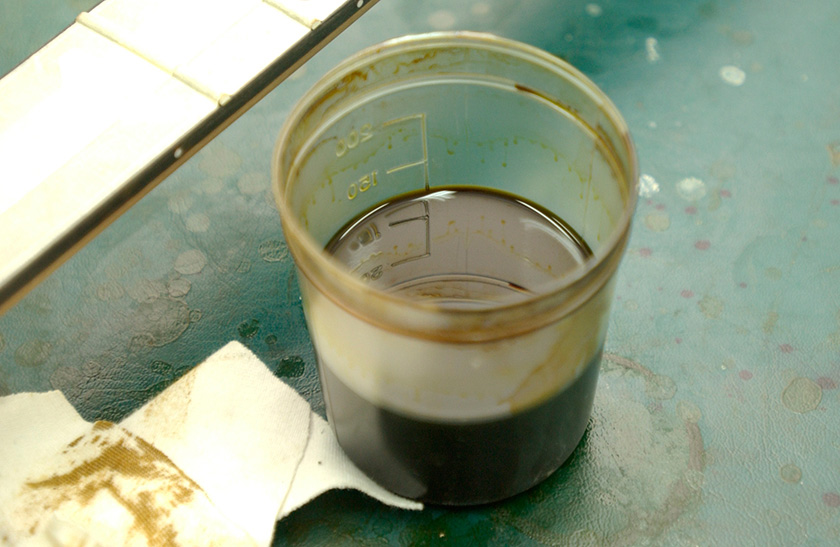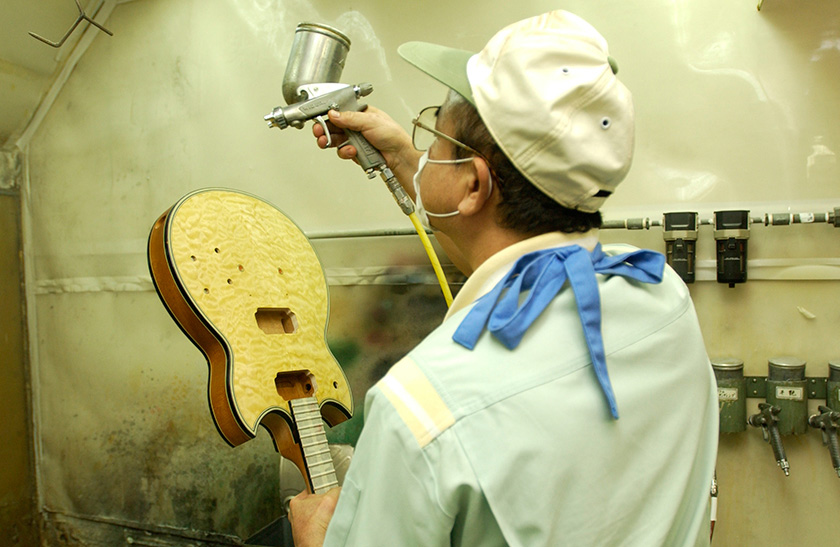How the Electric Guitar is Made
Coating gives the guitar a smooth finish
The first step is to bring out the wood grain
Coating is performed in several steps: undercoat, intermediate coat, coloration, and then a topcoat.
The guitar in the photo has not been coated yet. Although the luthier will next apply an undercoat, as he does so he will wipe a grain filler into the surface to give it its initial color. He coats the instrument with an organic solvent in which the paint has been dissolved, to help bring out the woodgrain.

The woodgrain is brought out instantly

Solvent used for the grain filler
The surface is polished to a mirror sheen
Next, a spray gun is used to apply the undercoat. The goal here is to even out any subtle unevenness in the surface of the wood. Guitars used to be sprayed with nitrocellulose, but now polyurethane or some other resin is used. The sound ultimately produced from the guitar will vary based on the type of paint and how it is applied.
The luthier sprays paint, dries it, polishes it with paper, and then repeats this process several times until the surface has a beautiful mirror sheen to it.

A spray gun is used to apply the undercoat
Musical Instrument Guide:Electric Guitar Contents
Structure
How to Play
How the Instrument is Made
Choosing an Instrument
Care and Maintenance
Trivia
- Slide guitar playing may have been invented in a bar
- Feedback:Great for guitar playing! Not so great for karaoke...
- What is the difference between an electric guitar and electric acoustic guitar?
- Is there a way to eliminate the noise heard when plugged into an amplifier?
- Whole note down tuning for deeper bass
